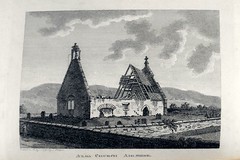Robert Burns (1759-1796)

According to a recent biographer ‘everyone knows about Burns’: the Ayrshire farmer turned poet has long enjoyed enormous popularity. Robert Burns (1759-1796) was a complex figure – in many ways he was a product of the bilingual and bicultural upbringing peculiar to much of lowland Scotland in the late 1700s. He was immersed in the Scots language and Scottish folk traditions, yet he was also well-schooled in English literature. Shown here, his 1786 breakthrough work, Poems, chiefly in the Scottish dialect succeeded instantly, selling out its run of six hundred copies within a month. He skilfully balanced the collection of poems by combining the Scots and English traditions: sometimes he uses an English just tipped with Scots, sometimes the Scots element is more pronounced, sometimes it is overwhelming. The end result was a work that proved popular to people across the social spectrum.

One of Burns’s most popular poems is Tam O’Shanter: a Tale. The poem was written in 1790 for his friend, the antiquarian Captain Francis Grose (bap. 1731, d. 1791), ‘a cheerful-looking grig of an old, fat fellow’ who was researching his Antiquities of Scotland. The carnivalesque, mock-epic poem sees Tam encountering witches and warlocks during a stormy night-ride home from the pub on his horse, Meg. Seen here, it accompanies the account of the Kirk of Alloway in the second volume of Grose's 1791 Antiquities.


